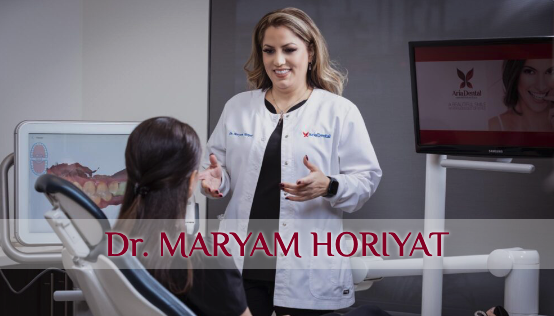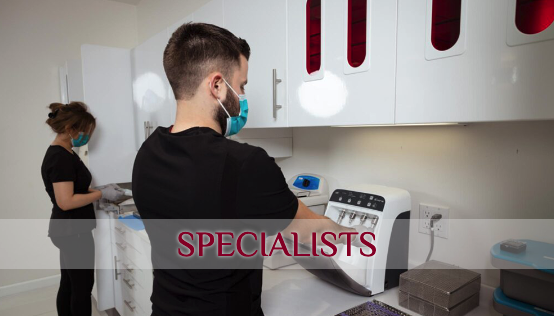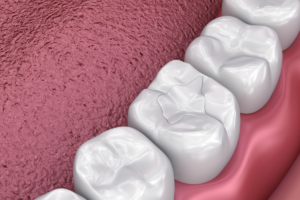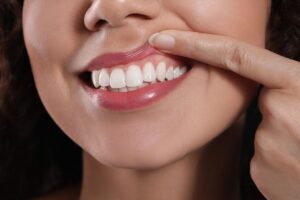Dental bridges seem like a reasonable investment when it comes to dental prostheses; however, they are not free from complications. One such complication is dental bridge infection, which, if gone unnoticed, could jeopardize both your oral and overall health. There are symptoms you should be wary of if you are opting for a dental bridge instead of a dental implant. This article talks about dental bridge infection symptoms and how to avert them.
What Is A Dental Bridge And What Does It Do?

A dental bridge is a fixed dental prosthesis that replaces one or more missing teeth by connecting an artificial tooth to another implant or other neighboring teeth. Many individuals prefer a dental bridge over a dental implant, as the former is less costly and not as invasive as the latter. But sometimes, complications might arise when it comes to dental bridges, as the risk of infection is relatively high. This article talks about dental bridge infection symptoms and what you can do to prevent them.
What Is Dental Bridge Infection?
Sometimes it so happens that the teeth under a dental bridge become infected due to gum disease or decay. Dental bridge infection is often a result of poor dental hygiene, or diets that are high in sugar or processed foods. Of course, sometimes infection happens when the dental bridge itself is ill-fitted, making thorough cleaning more difficult. The margin of the dental bridge is usually the starting point for tooth decay.
The decay, if gone unnoticed, can then progress all the way beneath the bridge and get inside of the crowns. It is therefore imperative that you take dental bridge infection symptoms seriously. That is why dentists recommend patients to schedule regular dental checkups; if your dentist identifies the decay before it reaches the nerve, they can usually remedy the problem with a simple bridge replacement.
Dental Bridge Infection Symptoms

You need to be on the lookout for dental bridge infection symptoms, if you have already opted for a dental bridge or are considering getting one. Quite often, a dental bridge infection is preceded by tooth decay underneath or around the dental bridge. Therefore, symptoms of tooth decay could also be the early dental bridge infection symptoms. They include:
- Tooth sensitivity: The very first sign of an underlying problem with the dental bridge is tooth sensitivity or hypersensitivity, which refers to those shocking sensations at or near the site of your dental bridge, while eating or drinking. If you experience hypersensitivity, you should promptly pay your dentist a visit. Tooth sensitivity is often the first telltale sign of a decay.
- Pain while chewing food: If you experience any pain or discomfort while chewing food, it could be another sign of a cavity or tooth decay under your dental bridge.
- Bad breath: Cleaning under the bridge can prove to be difficult. Thus, there is often a built-up of food under the dental bridge that can cause bad breath.
- Red and swollen gums: Whether it is due to poor oral hygiene or an ill-fitting dental bridge, if you notice swelling and redness in your gums, you need to call your dentist and schedule an appointment. Red, tender, bleeding, and swollen gums could take a turn for the worse if left untreated, ultimately leading to gum disease and even bone loss.
- Loosened dental bridge: Decay, when progressed, could cause the dental bridge to loosen. Tooth decay can also lead to gum disease and swelling, both of which could make your dental bridge loose.
- Puss around the dental bridge: This one is usually one of the indisputable dental bridge infection symptoms, and one of the most obvious signs of an infection around or underneath your dental bridge. Needless to say, if you notice puss around the margins of your dental prosthesis, do not think twice about calling your dentist promptly.
What to Do Before the Onset of Dental Bridge Infection Symptoms
There are things you could do before the dental bridge infection symptoms start to show. These include:
- Practice good oral hygiene: brushing at least twice daily for two minutes, and flossing once per day. Always pay attention to the area beneath your dental bridge, as that is where tiny particles of food tend to get stuck in, which could eventually lead to plaque built-up.
- Schedule regular checkups: Your dentist needs to monitor the health of your dental bridge and the adjacent teeth, and look for early dental bridge infection symptoms. Therefore, patients are recommended to schedule regular checkups every six to nine months to nip any infection in the bud before things get out of hand.
- Consider professional cleaning: Routine dental cleanings can significantly lower the risk of developing dental bridge infection. Teeth cleanings, when carried out by a professional holistic dentist, can help rid your oral cavity of plaque, debris, and tartar. Often, these cannot be removed with everyday brushing and flossing. A built-up of plaque can cause gum disease and decay, which could in turn lead to dental bridge infection.
- Reduce sugar consumption: A diet high in sugar puts you at a higher risk of developing dental bridge infection. Sweet, high-sugar snacks and beverages have the potential to damage your teeth irreversibly. These also include alcoholic beverages such as cocktails that contain a considerable amount of sugar. As mentioned before, dental bridge infection symptoms in the beginning are quite similar to the symptoms of tooth decay; and the number one cause of tooth decay is, you guessed it, sugar.
- Cut down on smoking: Smoking can have a significantly negative effect on your oral health. Regardless of whether you have veneers, dental crowns, or dental bridges, smoking can increase the risk of developing an infection, which could ultimately result in the loss of these dental prostheses.
- Limit alcohol consumption: Beer, red and white wine are all slightly acidic. Acid dissolves teeth enamel and can lead to tooth decay if you go over the board with your alcohol consumption.
- Use mouthwash: There seems to be no gray area when it comes to mouthwash. Some believe it is an integral part of good oral hygiene, while others think of it as a step that you can skip. One cannot deny, however, the positive effect of a mouthwash when you have any dental prosthesis. An alcohol-free mouthwash, accompanied by regular brushing and flossing, can keep your teeth and gums clean and healthy, and help manage early dental bridge infection symptoms.
Where to go from here?
This article was about dental bridge infection symptoms. Although sometimes opting for a dental bridge seems like the logical move, most holistic dentists prefer dental implants, as the risk of developing complications is lower with the latter. In this article you can read about the pros and cons of dental bridges and dental implants, and decide for yourself which one of these dental prostheses you would like to choose.
At Aria Dental, we recommend zirconia implants, as they are generally the safer option. Located in Orange County, California, our center offers a variety of holistic dental services, including zirconia dental implants. Call us today to schedule an appointment with our team of professionals. We would be more than happy to help!



















